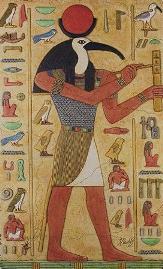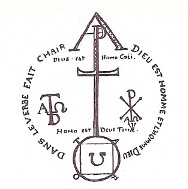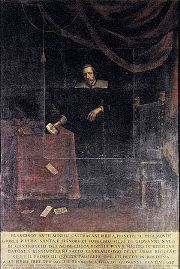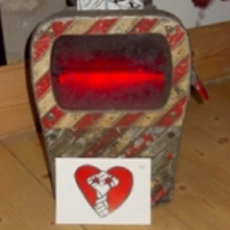Tarot History
La magica storia dei Tarocchi
Tarots are a series of symbols which hold
the primordial energies of existence and send them back to men, on a thin level, through the mantic, that is, by way of the reading of the signs.
 As an original land of the card, China is the place of probable invention of the playing cards.
As an original land of the card, China is the place of probable invention of the playing cards.
We know that the cards with the figures corresponding with a coin is inspired by an antique local monetization. The ku p'ai were, in fact, the cards based on three suits, which was identified with Jian (or Qian) ‘coin, money’, Tiao or ‘wands, long objects’ and Wan ‘myriads, 10,000, tens of thousands’.
The suits of Chinese cards can be trasformed, in the Western World, into traditional suits of common playing cards: the Cords similar to sticks, later become Swords and Wands; the Circles or Balls, instead, represent the Golds; while the Tens of thousands become the Cups, probably for the wrong interpretation of relative ideograms.
The sign of Italian Pentacles is almost identical with that of Chinese Cash, and the Wands which appeared in Italy in the sixteenth century, also called Pillars,
have a great similarity with the card ku p'ai, in which can also represent the image of Swords. As regards the Cups, instead, it is likely that it is a Chinese hieroglyphic abbreviation of wan, seen from a western eye (that is from right to left, and not left to right as that of use in Chinese) and if turned upside down it can symbolize a cup.
 The figures represented on the cards may have been inspired by the chess, relating this connection to a game of antique India, which provided for pieces of personifed figures both royal and military.
The figures represented on the cards may have been inspired by the chess, relating this connection to a game of antique India, which provided for pieces of personifed figures both royal and military.
The Chaturanga, which later became the persian, Shatranj, is considered one of the most possible origins of round Indian cards.
 Also the deck Ganjifa is constituted of twelve subjects, with the non-figurated cards (from 1 to 10) and two figures: a minister (or adviser) and a king.
Also the deck Ganjifa is constituted of twelve subjects, with the non-figurated cards (from 1 to 10) and two figures: a minister (or adviser) and a king.
The illustrations represent human figures and incarnations of many Indian gods, among which the incarnation or avatares of Vishnù, one of the Indian Trinity:
Besides that, some traditions report a connection between the cards of Tarots and the gipsy world. In attempting on an ethmological explanation of the term ‘Tarocco’, we separate between the world ‘Taro’, ‘Tarot’ and the term ‘Tantra’, an Indian mystical technique, aimed at the obtainment of a contact with the divinity which dwell in each human to find a harmony with all creation.
The sources appropriated of an Indian sacred game, which could be placed in relation with the images colouring the cards of the Great Arcana of Tarots.
The sources witness of the presence of nomadic tribes in Crete, Corfù and in Balkan before 1350, while in the first half of the fifteenth century the documents show that they appear in the north of Germany (Hamburg), e in Rome (1422), in Barcelona and Paris (1427).
Other sources say that the presumed origin of Tarot is to fly across, now, to the Egyptian Time.
In Egypt, the Pharaohs of blades, carved on stone or on other materials in which the meanings of the symbols have still been unknown, were impressed. Therefore, the Tarots would be a representation on card of the Egyptian ideogram, reproduced on the most antique text of Pharaonic Egypt called the Book of Toth.
 This unproved hypothesis, was advanced also from Court Gebelin (Le Mond Primitif analysé et comparé avec le mond moderne, 1781).
This unproved hypothesis, was advanced also from Court Gebelin (Le Mond Primitif analysé et comparé avec le mond moderne, 1781).
According to the scolar, the symbols represented on Tarots may have been noted by the nomads who, in the ancient time, migrated from the river bank of Nile to the European countries. This migration would occur around the fifteenth century, and in this sense there would be historical correspondences of the migrations derived from either India, or from North Africa, in that period. In Court de Gebelin’s view, the Tarots would be the key for opening the seals of hieratic hieroglyphics.
In this history picture, the work of Jean-Baptiste Alliette is set, which acquisted the definite name in the history of Tarots: Etteilla, or his surname read convertedly. In the eighteenth century, he published his book Etteilla, ou manière de se récréer avec un jeu de cartes, the first book which contained all explanations of the card sheets and the rules for a correct reading.
The symbols contained in the iconography of some cards of tarots were found also in the prophecy of Ezekiel of St. John.
We can also make a hypothesis that the Tarots, in an archaic level, could be the medals from which, successively, fabricated talismans. In fact, the clavicles, or small keys of Solomon, they are thirty-six talismans which carry sixty-two seals analogous to the hieroglyphic figures of the tarots.
These seals, would take part, besides, of the book of twenty-two roads, and their explanation can be found in the text attributed to Abraham, or the Sepher Jézirah.
 The stream of thought arrives at its conclusion and sees in the tarots the representation of the Jewish Cabala’s wisdom.
These are interpreted in the tarots term an evident connection with rota (wheel), the ‘wheel’, from which ‘tarot’ and ‘Torà’.
To make a panoramic on various other suppositions related to the origin of the Tarots, some believe, that their origin is antecedent to the Egyptian Culture and that it is connected to some group of people disappeared by now, o perhaps have been long forgotten, to a phantasmal or real Atlantis, other confirm that the Tarots were born by the Korean deck Htou-Tjyen (composed of 80 cards).
The stream of thought arrives at its conclusion and sees in the tarots the representation of the Jewish Cabala’s wisdom.
These are interpreted in the tarots term an evident connection with rota (wheel), the ‘wheel’, from which ‘tarot’ and ‘Torà’.
To make a panoramic on various other suppositions related to the origin of the Tarots, some believe, that their origin is antecedent to the Egyptian Culture and that it is connected to some group of people disappeared by now, o perhaps have been long forgotten, to a phantasmal or real Atlantis, other confirm that the Tarots were born by the Korean deck Htou-Tjyen (composed of 80 cards).
A hypothesis of Paul Foster Case (The Tarots, a Key to the Wisdom of the Ages) affirms that the cards of tarots may be born in 1200, in Fez, Morocco.
Other sources related to the introduction of playing Crusades cards.
About this subject matter, we remember that the occultist, Oswald Wirth, in his great work on the world of Tarots, placed the birth of playing cards and Tarots in Bologna, by Francesco Fibbia Castracani (see picture).

We know for certain that the Tarot cards found their widest spread in Europe, between the end of the Middle Ages and the Renaissance, even in the noble courts of northern Italy.
Filippo Maria Visconti, Duke of Milan, is one of the key in the world of trumps. To celebrate the future birth of a son, who never would have believed to have, he commissioned one of the most important Italian decks of tarot cards (1424), for which sixteen gods were chosen among them associated with greek pantheon. The following year came the birth, but instead of being a male, as hoped, it was female, Bianca Maria Visconti. This changed the symbolism of each card.
The story also points out that before 1420, a certain interest for the game of cards was already present in Italy.
From 1420 to 1429 appeared the first laws to regulate the game of cards in the region around Milan and Florence. In 1422 appears the first document attesting the game at the court of Ferrara, which then become one of the most important historical sources relating to the birth of tarot cards in Italy. The following year, Bernardino of Siena preached against the use of tarot cards and his words show that the structure of the deck was 4x14 numbered cards .
The sources, that lead to the consideration of regional tarocchi, such as the Tarocco Piemontese, are very important.
It's important the presence of the game of tarot cards at the Savoy house from 1401 to 1761, year of birth of Fabrique Royale in Turin, and then until the Unification of Italy (1861).
Another chapter of the utmost importance concerns the city of Bologna. To go into this process is illustrative of the research carried out by Sir Michael Dummett, Giordano Berti and Andrea Vitali. These scholars allow us to reconstruct a historical picture of great interest.








